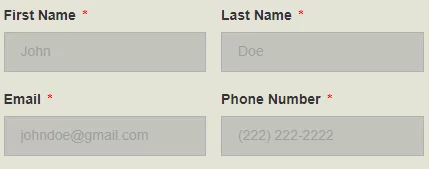
How do you protect your home from a lawsuit in California? As lawsuits become more common, you need a way to safeguard your house from creditors. Without a plan in place, a single lawsuit could rob you of everything you own. If you live in CA and have yet to craft an asset protection strategy, now is the time to do so.
Thankfully, the team at Asset Protection Planners knows exactly how to protect your home from a lawsuit in California. Read on to learn which methods work:

California Homestead Exemption
A homestead exemption is a legal designation homeowners use to protect their primary residence from creditors. When a homeowner exempts their property, creditors are forbidden from claiming it in a lawsuit.
Although California has a homestead exemption, it doesn’t offer much protection compared to those in other states. California is only a partial homestead state. This means that a homeowner can exempt only a portion of their primary residence’s equity.
Under California law, homestead exemptions range from $300,000 to $600,000 (adjusted for inflation). Homeowners can protect up to $600,000 of value in their home or the median home value in their county – whichever is lower. These figures are adjusted annually based on the Consumer Price Index.
Unfortunately, the value covered by California’s homestead exemption doesn’t align with the high value of many homes in the state. Currently, the median home value in CA is $866,100, second only to Hawaii. And this is the state median, which includes cheaper homes in more rural areas. The median home price skyrockets to $1.4 million in an urban area like San Francisco County. As you can imagine, a mere $600,000 homestead exemption won’t help a San Francisco homeowner keep their house after losing a lawsuit.
Even if the homestead exemption in California were more substantial, it wouldn’t be perfect. Certain creditors, like ex-spouses and government entities, can still breach this legal precedent. Additionally, creditors who successfully obtain judgments against the homeowner can force them to sell their home. Once the home is sold, the creditor can keep all the money.
Finally, judgments in California last for 20 years. A creditor can win a case and then wait to collect their winnings until a debtor’s home value surpasses the judgment value. Once the home’s value exceeds the exemption, they can sell the property and collect the value of the leftover equity.

Qualified Personal Residence Trust
Qualified personal residence trusts (QPRT) are a form of irrevocable trust used to protect homes from lawsuits in California. Qualified personal residence trusts move a settlor’s house out of their estate and assign a low gift tax value to the house. The property and any future appreciations are excluded from the settlor’s estate once the residence has been placed in the trust.
However, QPRTs come with their share of flaws. Namely, they are split-interest trusts that divide the property’s value between the settlor and beneficiary. Any value still held by the settlor when they are sued isn’t protected from a creditor. But in practice, it is extremely rare for a creditor to go after a settlor’s remaining interest. That’s because selling this interest in a foreclosure sale is very difficult. Additionally, QPRTs don’t protect against exemption creditors like government entities and divorced spouses.
Here are some other major drawbacks with QPRTS:
ï You eventually lose ownership: At the end of the QPRT term, ownership of the home passes to the beneficiaries, not you. If you want to keep living there, you have to pay rent to the beneficiaries — even though it was your house.
ï You can’t easily sell the house. During the QPRT term, selling the home is legally and practically difficult:
- The trust must sell it, not you personally.
- You’ll need to reinvest the proceeds into another personal residence — still inside the trust.
- You can’t just cash out the equity for personal use.
ï California-specific limitations: California law and public policy may be unfavorable to trusts perceived as abusive or as fraudulent transfers, especially during litigation or bankruptcy.

Land Trusts
Land trusts are a popular way to hide home ownership in California. These trusts are designed to prevent claims, not protect assets after losing a case.
To accomplish this goal, land trusts remove a homeowner’s name from public records. Essentially, the homeowner creates a trust and places the property in it. Then, when a contingency fee lawyer performs an assets search on the potential defendant, they will not easily find the real estate that person owns.
A land trust can be further strengthened with an LLC. Naming an LLC as the trust beneficiary adds more legal separation between you and your real estate. However, this strategy is best used for rental properties. Placing your home in an LLC-held trust can often prevent you from taking advantage of tax concessions on a primary residence.
Although a land trust is useful for protecting homes from lawsuits in California, it’s not ironclad. If a creditor successfully sues you, they can breach a land trust. Furthermore, the efficacy of land trusts varies from state to state. Unfortunately, California has many creditor-friendly laws that make land trusts weaker than those in states like Florida.

Equity Stripping
Equity stripping, sometimes called collateralization, is what many consider the best way to protect your home. This method involves encumbering an asset with debt to reduce its value. When used correctly, asset stripping is a perfectly legal form of asset protection. Professionals in high-risk industries often use this process to defend their homes from lawsuits.
The most common type of equity stripping occurs when homeowners place a large mortgage on their home. In California, this mortgage is legally referred to as a deed of trust. This process makes homes a less attractive target for creditors, as the company that holds the mortgage must be paid before the creditor. The mortgage proceeds can also be placed into an offshore trust, where they will be protected from creditors. Offshore trusts are the preferred legal vehicle for protecting these proceeds because they provide the highest level of asset protection.
Equity stripping does not necessarily involve banks or other traditional lenders. You can have your asset protection planner combine an offshore trust and an LLC. Here’s how you’ll do this:
- Record a home equity line of credit against the home: Using an offshore LLC, you can record a line of credit against the home’s equity without cash changing hands. This line of credit can be used later to strip the home of its equity.
- Sell the mortgage to another offshore lender: It is a common practice for banks to acquire mortgages from one another. This can benefit homeowners hoping to protect the full value of their homes from creditors. For example, if you use a line of equity credit, you can sell the deed of trust to one of our private lenders. Then, you can start making mortgage payments to that lender. This process creates a paper trail showing you have little to no home equity. It also enables you to show courts where your money is going, which proves you aren’t concealing assets. However, a US court cannot enforce a judgment against the funds because they’re held in an offshore trust. Many of the world’s favored offshore trust jurisdictions, such as the Cook Islands, Belize, and Nevis, do not recognize foreign judgments.
It is important to note that putting a house directly into an offshore trust is not ideal. Real estate is subject to the laws of where the property is located, so local judgments can still affect it. As a result, it is advisable to strip the equity from the real estate. In a worst-case scenario, it’s better to lose the real estate and keep its value as liquid assets held in an offshore trust.
Equity stripping is a powerful asset protection strategy, but it must be executed carefully to avoid unintended consequences. When equity is stripped from a home—typically by recording a lien in favor of a lender—it creates a secured debt that reduces the apparent value of the asset to creditors. However, this also means the lender gains a secured interest in the property and may have the right to demand loan payments under the terms of the agreement.
If a lawsuit arises and your liquid assets are frozen or tied up, making regular loan payments could become challenging—potentially leading to default and foreclosure.
To mitigate this risk, we recommend using a private lender rather than a traditional bank. A private lender can structure the loan to include:
- Deferred or interest-only payments
- A single balloon payment due at the end of the loan term
This allows you to maintain the protective value of the lien without the pressure of monthly payments, reducing the risk of default during legal duress and helping to preserve your property.
It is also possible to use equity stripping for other assets outside of real estate. Even assets like a privately held corporation can be protected by equity stripping. Equity is pulled from the stock by borrowing against them. The equity in a company’s accounts receivable may also be stripped. Equity stripping should be considered an option in any well-crafted California asset protection strategy.
Protect Your Home from a Lawsuit in California with Help from Asset Protection Planners
As home values continue to outpace state homestead exemption limits, Californians need to have a solid asset protection plan in place.
Fortunately, Asset Protection Planners is ready to help you. Our experienced team knows exactly how to protect real estate from a lawsuit in California using effective equity stripping processes. By implementing an effective equity removal plan, we can help you keep your home even after losing a lawsuit. Don’t get caught without a plan when a lawyer comes knocking on your door. Click the button below to protect your home from a lawsuit today.



